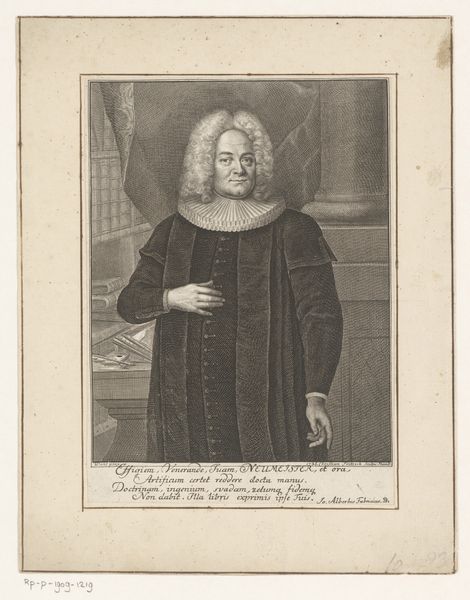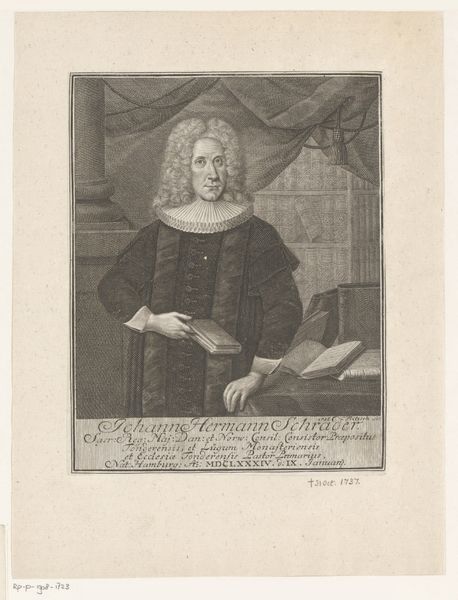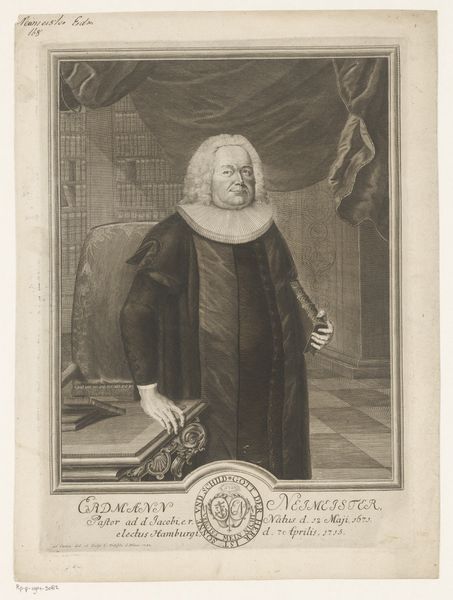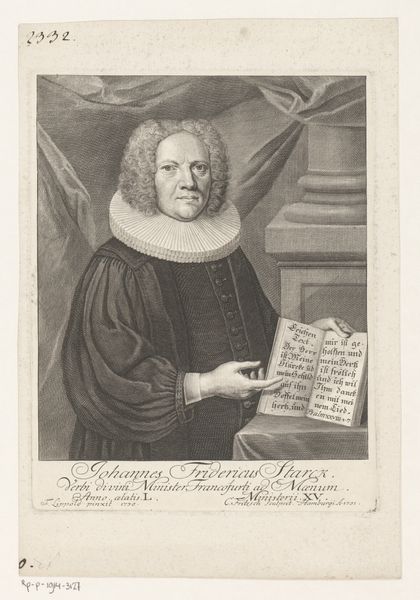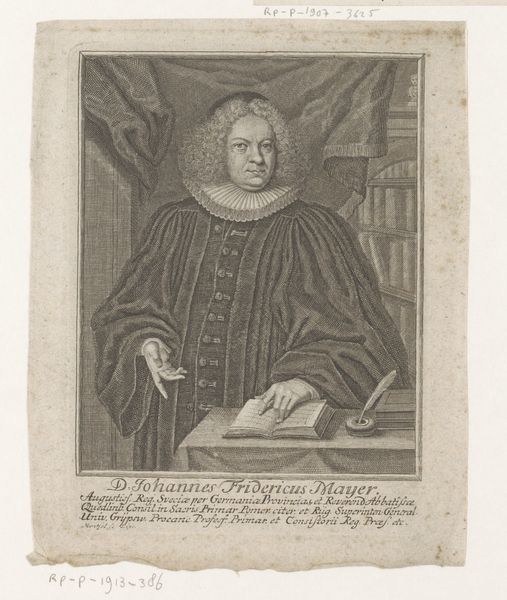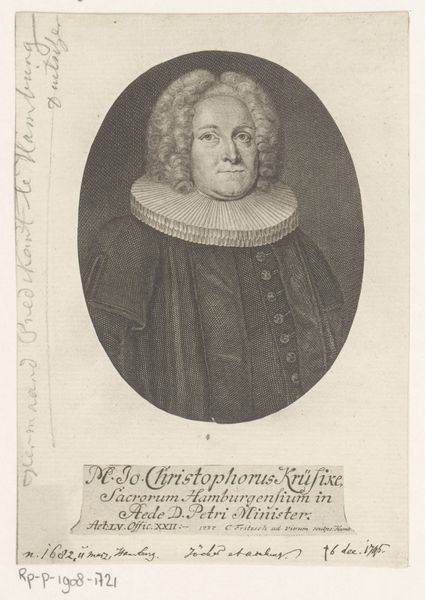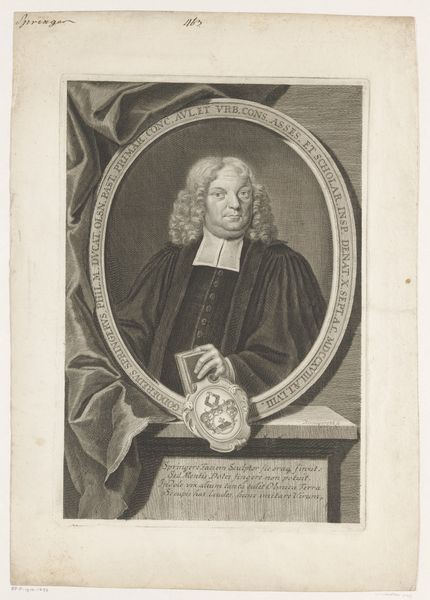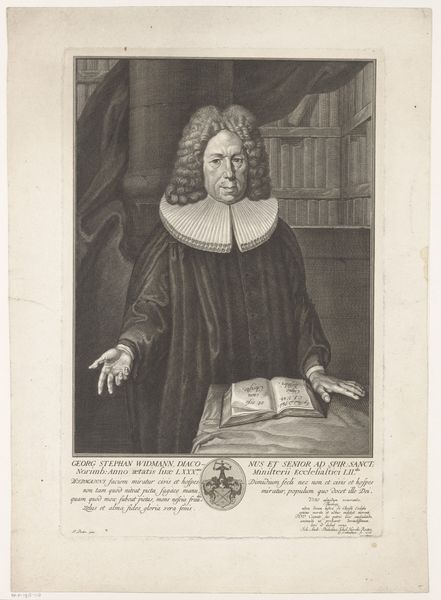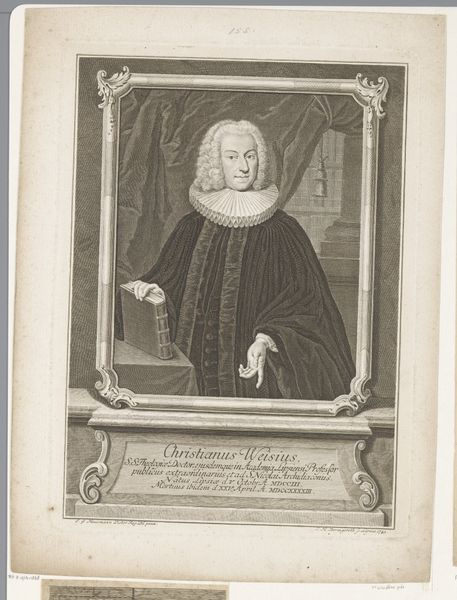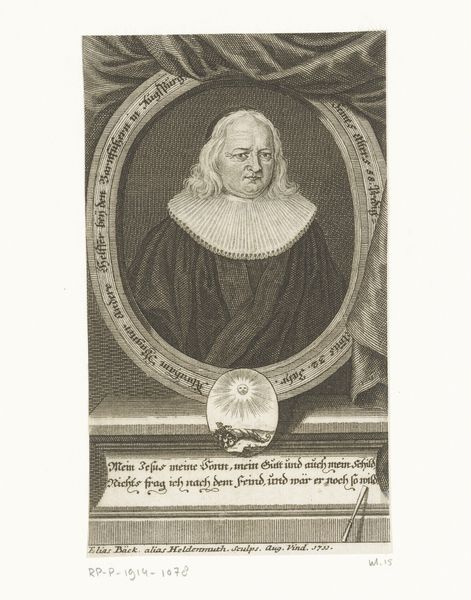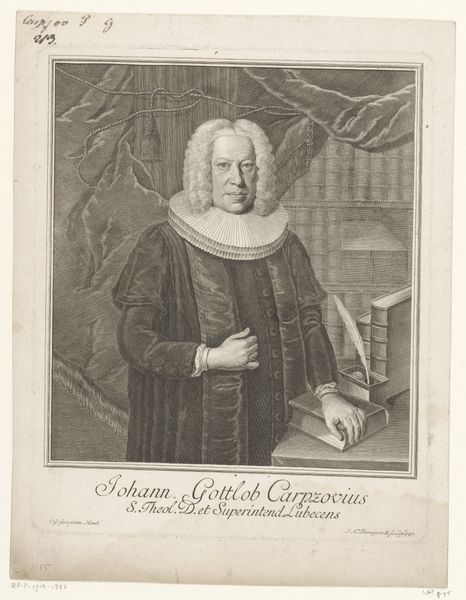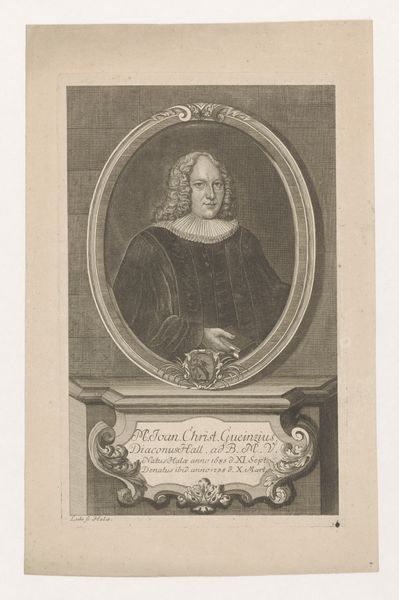
Dimensions: height 208 mm, width 168 mm
Copyright: Rijks Museum: Open Domain
Editor: This is a portrait of Johann Gottlob Carpzov, made in 1736 by Christian Fritzsch. It's an engraving. The details are incredible, and the subject's expression is so direct. What do you see in this piece that I might be missing? Curator: I see more than just a portrait. This engraving, though seemingly straightforward, offers a window into the construction of authority and identity within a very specific socio-political context. Consider Carpzov’s elaborate wig and clerical collar. How might these visual markers contribute to the perception of power during the 18th century? Editor: Well, I suppose they signify his status, his learning and importance within the church, right? It seems like a way of presenting himself as an established figure. Curator: Precisely. Now, think about the broader implications. What ideologies are being reinforced through these representations? How does class intersect with religious authority? Is there a performative aspect of the self on display? Notice, too, the books and the coat of arms: These symbols further root Carpzov in a narrative of intellectual and aristocratic validation. It's a carefully constructed image, a strategic act of self-representation, if you will, deeply embedded within the power structures of the time. Editor: So, it's not just a portrait, but a statement about the subject’s place in society. I never really considered the coat of arms playing that big of a role in shaping his identity. Curator: Exactly. These details, when unpacked, reveal the complex negotiations between the individual, their social standing, and the mechanisms through which they are represented. How does that impact how you interpret portraiture generally? Editor: It makes me think about how identity is always in dialogue with power. This portrait is like a record of that conversation. Thanks! Curator: Indeed. Considering such power dynamics enriches our understanding and reminds us that representation is rarely neutral, instead furthering the narrative of those in power.
Comments
No comments
Be the first to comment and join the conversation on the ultimate creative platform.

